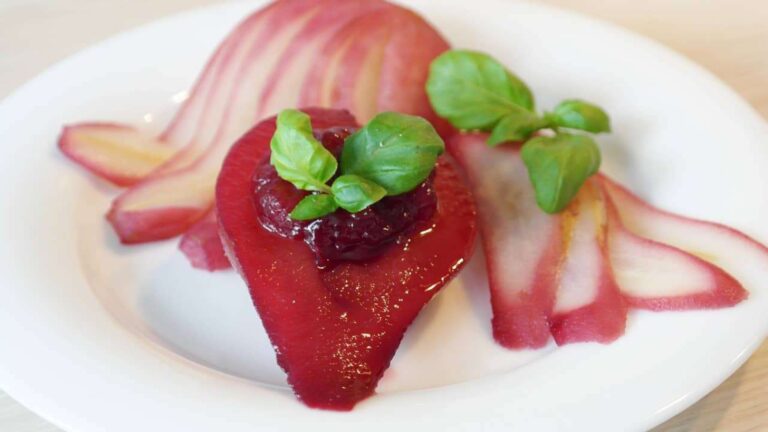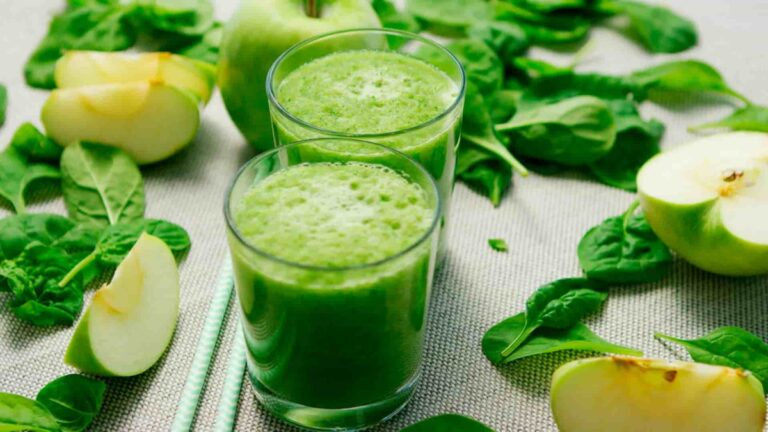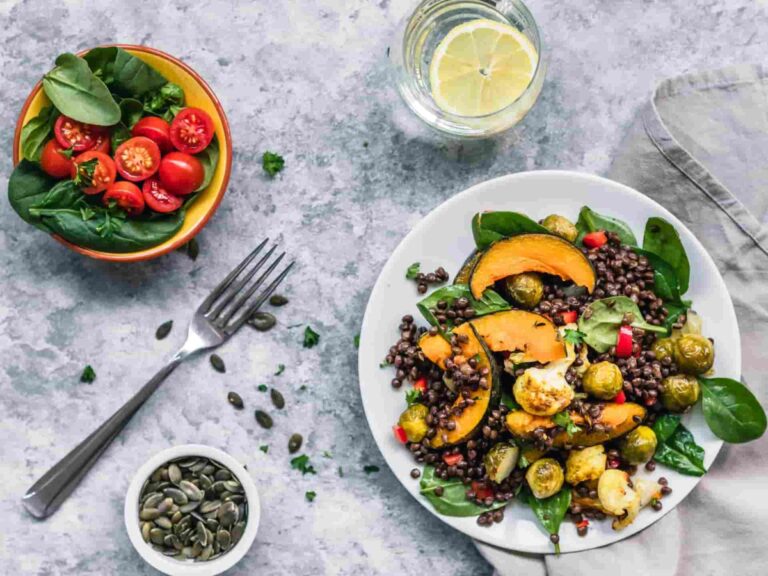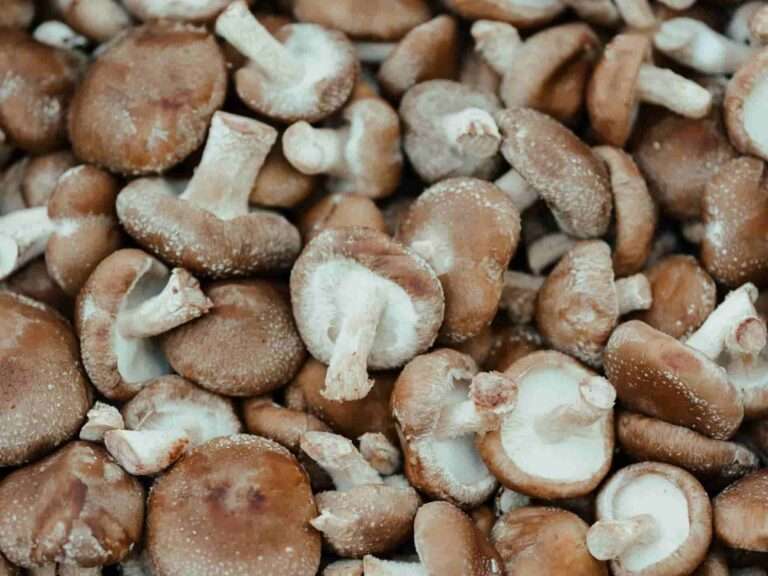Cabbage 101-free tips and secrets for you
Did you know that cabbage is believed to be the “elixir of baldness”?
- In ancient Chinese scrolls from around 1000 B.C., cabbage was described as a miraculous treatment that could prevent baldness in men. There is no disputing the fact that cabbage is a rich source of nutrients that are good for one’s health; despite the fact that it is impossible to ascertain whether or not this assumption is accurate, nobody can deny that cabbage is a superfood.
- The densely-leaved heads of cabbage, which are produced by several varieties of the plant Brassica oleracea, are harvested for use as a vegetable crop. Cabbage can be found as a leafy green, red (purple), or white (pale green) biennial plant. The Cruciferous are the family of plants that includes cabbage. It is referred to as “wild cabbage” due to the fact that it is a descendant of the wild cabbage.
- Even though cabbage is considered to be Russia’s national food, the country’s average intake of cabbage per person is not among the highest in the world. The year 2018 saw Romania take first place with 57 kilogrammes per person, followed by South Korea (46 kg per person), and Ukraine (39 kg per person).
- At the turn of the century, cabbage was considered to be a food for those with lower socioeconomic status. It is currently recognised to have powerful anti-aging and anti-cancer capabilities, making it one of the most highly regarded vegetables in terms of nutritional value. In addition to this, cabbage is low in both total cholesterol and saturated fat.
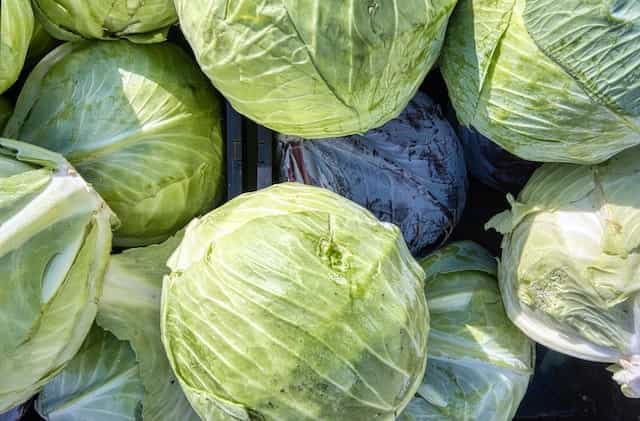
Cabbage nutrition and health benefits facts
- Cabbage contains traces of several minerals in addition to the vitamins A, C, and K. These traces include iron, riboflavin, and other minerals. In particular, it has a significant amount of vitamin B6 and folate, both of which are essential for a wide range of important processes that take place in the body, such as the production of energy and the maintenance of a healthy nervous system.
- Furthermore, cabbage has a high concentration of fibre and is packed with powerful antioxidants, including polyphenols and sulphur compounds, both of which shield the body from the harmful effects of free radicals.
- Cruciferous vegetables, like cabbage, contain a wide variety of anti-inflammatory antioxidants, and research has shown that these anti-inflammatory antioxidants can help reduce inflammation in the body over time. It is quite likely that the presence of antioxidants like sulforaphane, kaempferol, and other phytochemicals in this exceptional group of plants is the cause of their anti-inflammatory benefits.
- Cabbage is loaded with the water-soluble vitamin C, also known by its chemical name ascorbic acid, which is essential for the body and participates in a wide number of processes. It is necessary for the production of collagen, which is the protein that is found in the greatest quantity in the body.
- In addition to its role in maintaining the structure and pliability of the skin, collagen is also required for the proper operation of bones, muscles, and arteries. Although both green and red cabbage are excellent sources, red cabbage provides around thirty percent more of this powerful antioxidant than green cabbage does.
- One of the numerous advantages of cabbage is the high amount of insoluble fibre it contains. This type of fibre contributes to a healthy digestive system by serving as food for bacteria that are beneficial to the body and by promoting regular bowel movements.
- Anthocyanins are powerful antioxidants that are found in cabbage. These anthocyanins have been shown to reduce the chance of developing cardiovascular disease.
- Potassium may be beneficial in helping to maintain normal blood pressure if it is ingested in sufficient quantities. Those suffering from hypertension may find relief from their condition by increasing their intake of potassium-rich vegetables like cabbage.
- Due to the fact that cabbage can be used in so many different ways, including it in your diet is quick and easy. It can be used in a wide variety of dishes, such as stews, salads, soups, slaws, and sauerkraut, to name just a few of the possible preparations.
- Cabbage is a vegetable that packs an impressively high nutritional punch. It has an outstanding nutrient profile, with a concentration of vitamins C and K that is exceptionally high and stands out among other vitamins.
- Consuming cabbage may also assist in the prevention of certain diseases, the enhancement of digestion, and the reduction of inflammation throughout the body. Aside from that, cabbage is a wonderful and inexpensive ingredient that can be used in a wide variety of cuisines.
- Because eating cabbage may provide a number of potential health benefits, it is deserving of some attention and a spot on your plate. This is especially true in light of the fact that cabbage deserves both.
100g of raw cabbage has 25 calories(104kj), 1.3g protein, 0g fat, and 6g carbs, including 2.5g fibre.
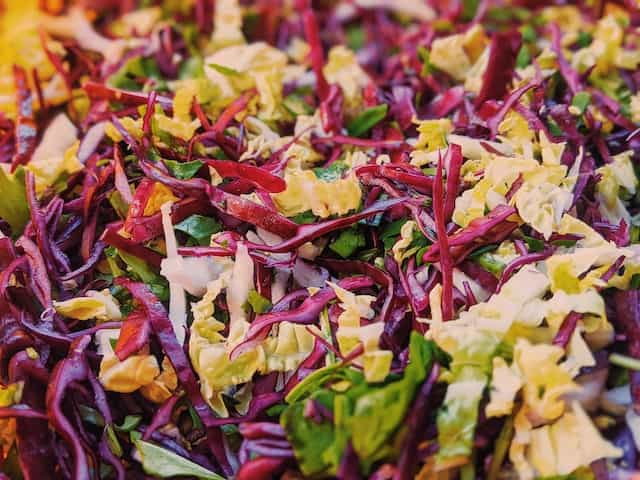
How to store cabbage and how to buy them
- When shopping for cabbage, look for heads that have large, bright-coloured leaves. There are two colour options for cabbage: green and red. Cabbage can also be purple. When purchasing green cabbages from the market, look for ones that have a vibrant and bright colour, one that is roughly the same shade as lime green.
- If you touch the cabbage’s exterior, you should feel that it is solid. If it is, the cabbage is ready to be eaten. If you touch or feel a cabbage, it should have a soft and spongy texture rather than a firm and thick texture, which is an indication that the cabbage is rotting from the inside out. When selecting cabbages, make sure to choose only those that are solid and unyielding to the touch.
- It is in your best interest to steer clear of any cabbages that have become discoloured or putrid in colour. It is not suggested that you make the purchase of the cabbage if the leaves are significantly damaged or if the cabbage has a number of blemishes (black spots). These characteristics are almost always linked to the presence of worm infestations.
- Larger heads of cabbage, as opposed to more compact or smaller heads of cabbage, typically include cabbage that has a flavour that is easier to describe as mild. If you are new to eating cabbage or trying to convince yourself that you enjoy it, selecting larger cabbage heads will help you experience less of that distinctive cabbage flavour. This is an excellent strategy if you are in either of these situations.
- Hold off on chopping the cabbage until just before you need it. When you cut cabbage, some of its vitamin C is released into the air. You can keep a portion of a cabbage in the refrigerator for up to two days if it is tightly wrapped in plastic wrap and kept there for the duration of the storage process.
- Place the cabbage in the crisper drawer of your refrigerator to keep it cool and crisp. If it is stored cold, the crisp texture of the cabbage will be preserved, in addition to the nutrients that are in it. To begin with, secure it by placing it inside a plastic bag for added protection. After delivery, it should remain in a condition that is suitable for up to two weeks at the very least.
- Depending on the gravity of the problem and the amount of time that has passed since the cabbage went bad, it is possible for it to be fatal. Continue reading to learn about the different methods you may use to inspect your cabbage:
- Just by giving it a whiff, you can quickly determine whether or not the cabbage has gone rotten. Old, decaying cabbage smells like decay or ammonia.
- Examining the vegetable before eating it reveals its consistent characteristics. For instance, the outer leaves of a rotten cabbage as a whole may exhibit signs of shrinking and shrivelling.
- Check the cabbage thoroughly to verify that you are using the freshest possible example, whether you are using white cabbage or another variety. The texture of spoiled cabbage is described as having a slimy quality. The consistency is more similar to that of wet mush.
- Cabbage is one of the vegetables that can become mouldy or watery if it is left out for too long. If it has been stored in the refrigerator for more than four weeks, you should anticipate seeing mould or fungus growing on it.
- If the top piece of the cabbage is the only part that has wilted but the cabbage still appears to be in good shape and smells pleasant, you should try some of it. In the same manner as with lettuce, begin by removing the outermost layers.
- Before placing sliced or whole cabbage in the freezer, blanch it beforehand so that it will keep for a longer period of time. The practice of blanching food is common among the various methods for preserving food, notably when freezing vegetables. It begins with bringing the cabbage to a boil in water for two minutes, after which the water is drained and the cabbage is dunked into a dish of ice water as quickly as possible. After being cooled, the food is placed in containers that are airtight and transported to the freezer.
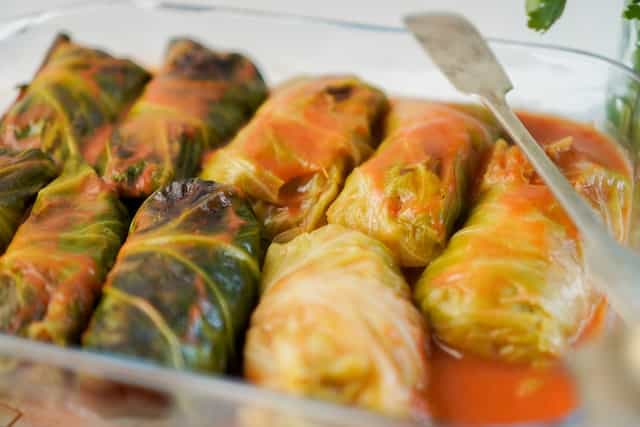
Cooking techniques, secrets, and tips from the kitchen
- Take off the outer leaves and then take out the inner ribs that are so tough. Place the leaves in a stack, roll them into a cigar shape, and then chop them into very small shreds. Cut the densely packed main centre into manageable quarters, use a V-shaped cut to remove the tough root core, and then slice it crossways to the desired thickness or thinness. Alternately, the cabbage can be sliced into thick wedges and roasted.
- Depending on your taste, cabbage can be consumed either raw or cooked. The choice is yours. It is possible to prepare it in a number of different ways, such as by boiling, steaming, braising, sautéing, stir-frying, or even microwaving. Only until it is just on the verge of becoming tender should it be cooked.
- If you overcook cabbage, it will become mushy and paste-like, and it will also emit a putrid smell that is hard to stomach. The sulfuric compounds that are produced when cabbage is cooked for an inordinately long period of time are to blame for the putrid smell that results from the cooking process.
- It is best to boil the cabbage in a manageable amount of water so that it retains its flavour while remaining tender.
- The water should first be brought to a boil before adding the cabbage to a saucepan of boiling water.
- Add the shredded cabbage, then cook the mixture on the burner without covering it.
- prepared over low heat for three to five minutes, stirring once every three minutes. If you are using wedges, the cooking time for them should be between 10 and 15 minutes.
- Be sure to check on the cabbage frequently while it is cooking so that it does not become overcooked. This will help avoid the cabbage turning mushy.
- When the cabbage is just beginning to become tender, it is ready to eat.
- After cooking, transfer the cabbage to a colander or use a slotted spoon to remove excess liquid. As soon as possible, serve, adding additional salt to taste.
- A food that may be made with little to no preparation is steamed cabbage.
- Make sure that the water in the saucepan does not boil up through the steamer basket when you are filling the saucepan with water. This will cause the water to be wasted. The water in the pot should be brought to a rolling boil.
- Depending on the size of the cabbage, place the shredded cabbage or wedges in a steamer basket and place the basket in a pan of boiling water until the cabbage is tender.
- Cover and simmer the cabbage for 5 to 8 minutes for shredded cabbage and 10 to 12 minutes for wedges. Cook the vegetables for a short amount of time, just until they are crisp-tender.
- After cooking is complete, take the basket out of the steamer, sprinkle the cabbage with salt and pepper, and serve while it is still hot.
- For the preparation of stir-fried cabbage:
- Bring the oil in a skillet or wok to a high temperature before adding the cabbage.
- Toss the cabbage shredded into the oil that has been heated. Reduce the heat to medium and cook the cabbage for two to three minutes, stirring it frequently, after which you may remove it from the pan.
- Add some salt, pepper, and vinegar to taste, and then season with salt and pepper.
- Continuously stir the cabbage for about ten minutes, until it is tender but still has some crunch.
- When the cabbage is completed cooking, its volume will be approximately half of what it was when it was raw. This is because cabbage shrinks when it is cooked.
- Pickling has long been used as a method for preserving cabbage, which has led to the creation of delicious condiments and side dishes like sauerkraut and kimchi. However, kimchi is often made from Chinese cabbage rather than regular cabbage. The Chinese food of bean curd and cabbage is considered to be a traditional dish of Chinese cuisine.
- On the other hand, the British delicacy of bubble and squeak consists primarily of mashed potato and cabbage that has been cooked, and it is eaten with cold meat.
- Eastern European nations, such as Romania and Hungary, are famous for their traditional dishes that feature cabbage as a key component, along with beef or pork, in the dish. These nations are known for their stuffed cabbage rolls (an example is in the picture above).
- The green, grassy flavour of cabbage goes well with a wide variety of other flavours and ingredients, including apples, tomatoes, parsley, bay leaves, sage, elderberries, and Gin Mare. Herbs and spices, along with other ingredients such as orange zest, dried figs, bell peppers, olive oil, and even fried chicken, can be used to improve the aroma of the green-fatty substance.
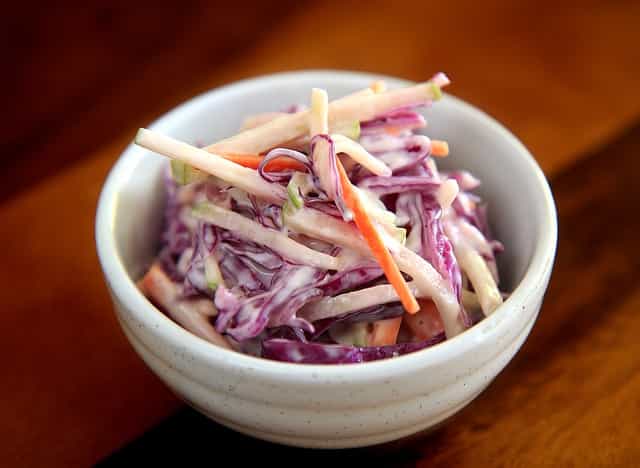
History of cabbage from the beginning until today
- The theory that the West cabbage was domesticated in Europe some 3,000 years ago from its wild forerunners, which had thick leaves that stored moisture and allowed them to flourish in colder climes with less water, is the one that is most frequently accepted.
- Since 4,000 B.C., people in the East have been making use of cabbage, and its origin may be traced back to North China. The Celts, who lived in central and western Europe, were the first people to plant these different types of cabbage.
- Cabbage was a common food among ancient Egyptians and Romans, and eating more cabbage before going out for a night of drinking helped them consume more wine.
- It was in the 14th century when the first cabbages with round heads arrived in England. Since then, cabbage has progressively acquired favour as a culinary element across Europe. We find proof for this in mediaeval manuscripts where they were featured in illuminations and in other texts where they were mentioned as the dinner of both the affluent and the needy during that time period.
- Varieties of cabbage that were bred for cultivation spread from Europe to Asia and then to the Americas. It was not known in Japan until the 18th century, although Portuguese colonial traders brought it to India between the 14th and 17th centuries. In Japan, it remained unknown until the 18th century.
- China is currently the largest producer of cabbage, followed by India and Russia, which is also the largest consumer of cabbage.
- Around the world, cabbage is prepared using a wide number of different methods. The raw form of cabbage is often used in salads, but it can also be prepared by steaming, pickling, stewing, sautéing, or braising.
- The most well-known pickled vegetables are sauerkraut and kimchi, while coleslaw is an indispensable component of salads.



